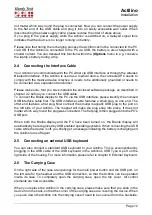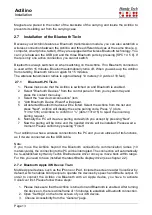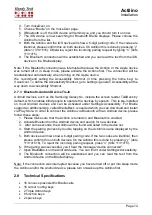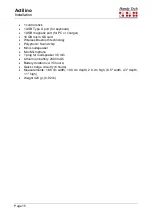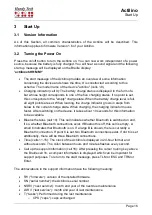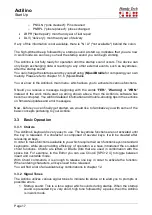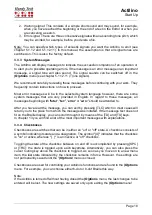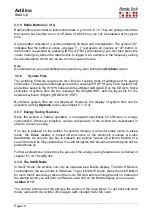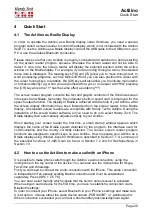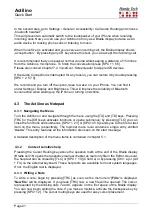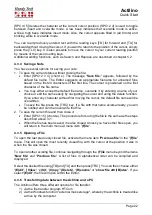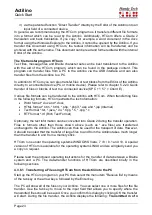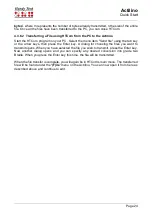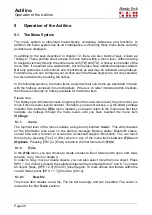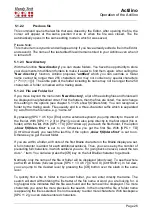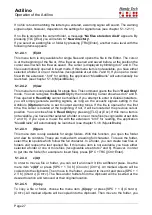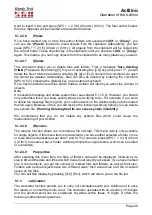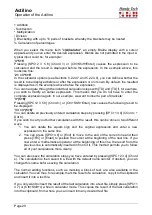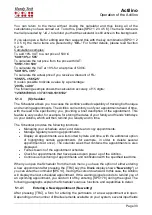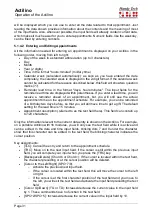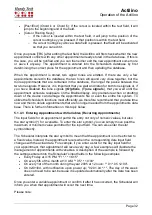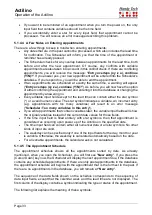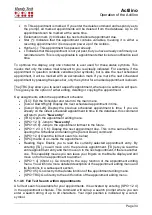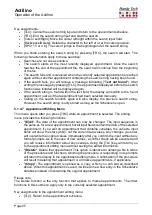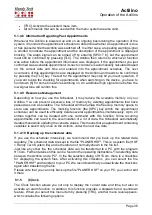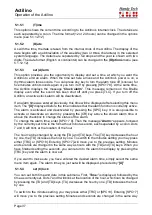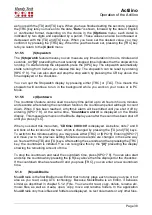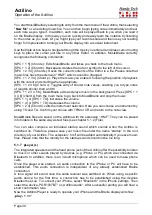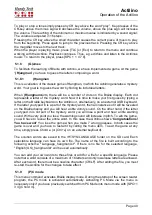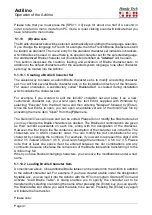
Actilino
Operation of the Actilino
Page 26
5.1.2.2
Previous file
This command opens the last file that was closed by the Editor. After opening the file, the
cursor will appear at the same position it was in when the file was closed. The file
automatically opens in the same editing mode in which it was saved.
Please Note:
This menu item is dynamic and will appear only if you have already edited a file in the Editor
and saved it. The name of the last edited file will remain stored in your Actilino even when it
is turned off.
5.1.2.3 New directory
With the function
“
New directory
“ you can create folders. You have the opportunity to store
your documents into different folders to make it easier to find them again. After calling the
“
New directory
” function, Actilino proposes “
untitled
” which you can override. A folder
name cannot be longer than 255 characters and may not contain any special characters
(:*?"<>|+,;=[]/\). The entire path of the folder including its name may not be longer than 259
characters. A folder is marked with a trailing slash.
5.1.2.4 File and Folder list
If you move beyond the menu item
'New directory'
, a list of the existing files and folders will
be displayed in alphabetical order. First the folders, then the files are listed. You can change
this setting in the options (see chapter 5.1.12.5 show f(O)lders first). You can recognize a
folder by the trailing slash. Files usually end in a three-character suffix which is separated
by a dot from the file name, e
.g. “name.txt”.
By pressing [SPC + 4 5 6] or {End} on the external keyboard you jump directly to the end of
the file list. With [SPC + 1 2 3] or {Pos1} you can also jump directly to the first object (file or
folder) within the list. With [SPC + TU] {Ctrl+Arrow up} you reach the first folder, if the option
„
show f(O)lders first
“ is set to on. Otherwise you get the first file. With [SPC + TD]
{Ctrl+Arrow down} you reach the last file
, if the option „
show f(O)lders first
“ is set to on.
Otherwise you get the last folder.
If you are within a folder, all 8 dots of the first Braille character on the Braille display are set.
A full character is added for each additional sublevel. Thus, you can see by the number of
preceding full characters, in which sublevel you are. For going back one level, select the two
dots “..” item. You can also press the [CR] key on the full Braille character to get back.
Normally, only the name of the file or folder will be displayed (short view). To see the whole
path with all folders (full view) press [SPC + 1 3 4 6 7] (Chord X) {Ctrl+Shift+x}. In full view,
you can jump to the desired level by pressing the [CR] button over the slash in the same
level.
To quickly find a file or folder in the current folder, you can enter directly the name. The
search will start with entering the first letter of the file name or word you are looking for. A
high signal tone indicates that the file was found and the name will be displayed. The more
characters you enter the more precise is the search. In the moment the file or folder name
is appearing the file is selected. It is not necessary to enter more characters. With backspace
[SPC+1 2] you can delete entered characters.

